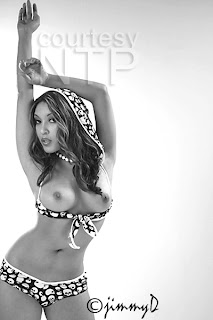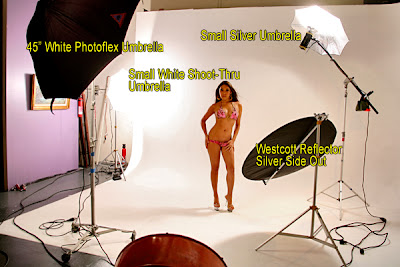Please keep reading. I'm not looking for a loan. It's not that kind of help I'm seeking. (Gratuitous donations, of course, are always welcome.)
Here's the deal: Today, which (coincidentally) turned out to be the day after the premiere episode of VH1's reality(?) TV show, "The Shot," aired, also happened to be the day we were already scheduled to meet again with our agent and a producer regarding our proposed,
Pretty Girl Shooter, reality TV show. (Which, also coincidentally, contains some subject matter slightly similar to VH1's show.)
Here's the good news: After advising both the agent and the producer of the existence and imminent premiere of VH1's, "The Shot," both of them still showed up for the meeting! (They were both unaware of "The Shot" and, after breaking the news to them in an email just three days ago, we hadn't heard a word from them in response... not even a call to confirm the meeting was still on.)
Whew!
Here's the even better news: As a result of VH1's show, we made some adjustments, massaged the idea a bit, brainstormed for a hook that more completely separated us from VH1's show, and devised some new angles, ideas, and a format which, in all our minds, has produced an even stronger show idea which, according to the people we met with today, might have an even better shot at getting picked up by a broadcaster or cable caster... regardless of VH1's entry into the photography-themed, reality-show, market.
So what's the help we're looking for? Well, it's really simple and would only take a few minutes of your time. We would greatly appreciate you taking some time out of your busy schedules to write us a short email (to prettygirlshooter@hotmail.com) and, in your email, sharing whatever you're willing to share about whatever of the following would apply to you:
1. If you principally make your living as a photographer (a photographer of any sort) please advise. If you simply shoot pretty girls as a hobby, please tell us what you do for a living? If you make some portion of your living from photography, what kind of photography do you pursue for $$$? If you make a portion of your living shooting pretty girls, what is the purpose of these images? (e.g., model ports, MySpace or FaceBook pages, whatever.) If you are retired and you shoot models as a hobby (or to supplement your retirement income) please tell us what you did for a living before retiring.
2. How much time and/or resources do you devote to pretty girl shooting? Do you shoot models regularly? Do you attend workshops and/or seminars which include shooting models? If so, how often do you attend these events or how often do you shoot models that you hire or arrange to shoot? If you attend workshops or seminars, do you attend local events or do you travel to attend them? Do you participate in online photography forums where glamour and related genres of photography are discussed? How much time do you spend doing that? How much $$$ have you spent on photo gear in the past few years?
3. Assuming you have a significant other, how do they feel about your pretty girl shooting endeavors?
4. Why did you choose glamour (or a similar photographic genre, e.g., fashion, art nudes, etc.) as the focus of your photography?
5. Where do you hope your photography might take you?
6. This one's optional. (Although merely responding to any or all of the first five questions are optional as well... but this one is even more optional.) Assuming this TV show goes the way we hope it will go and ALSO ASSUMING you, as a pretty girl shooting photographer, might be interested in participating in the show -- sorry, we can't reveal the specific premise yet -- we'd love to see a snapshot of yourself along with one or two samples of your work. (Please feel free to watermark as boldly as you'd like.)
PLEASE NOTE: We're NOT just looking for accomplished photographers. Whether you're a beginner or you're quite experienced -- wherever you are on the pretty-girl-shooting learning curve -- we'd love to hear from you. And we also hope you'll share a few samples of your work regardless of the level of skill they might demonstrate.
That's it. Simple, right?
ANOTHER NOTE TO PLEASE NOTE: We might write a few of you back with some follow-up questions. But please, if you don't hear from us, don't assume your response was unappreciated nor does it mean, if you indicated you might be interested in participating in the show, that your response didn't interest us from that perspective. Also please note that we're not collecting email addresses as a means to sell you something. The data we're collecting is informational only and your names, email addresses, and/or responses will be kept in strict confidence.
For those of you taking the time to respond, we thank you. For those who, for whatever reasons, prefer not to respond, thanks for supporting the blog!
 Lately, I've been using shoot-thru umbrellas fairly regularly.
Lately, I've been using shoot-thru umbrellas fairly regularly. 






